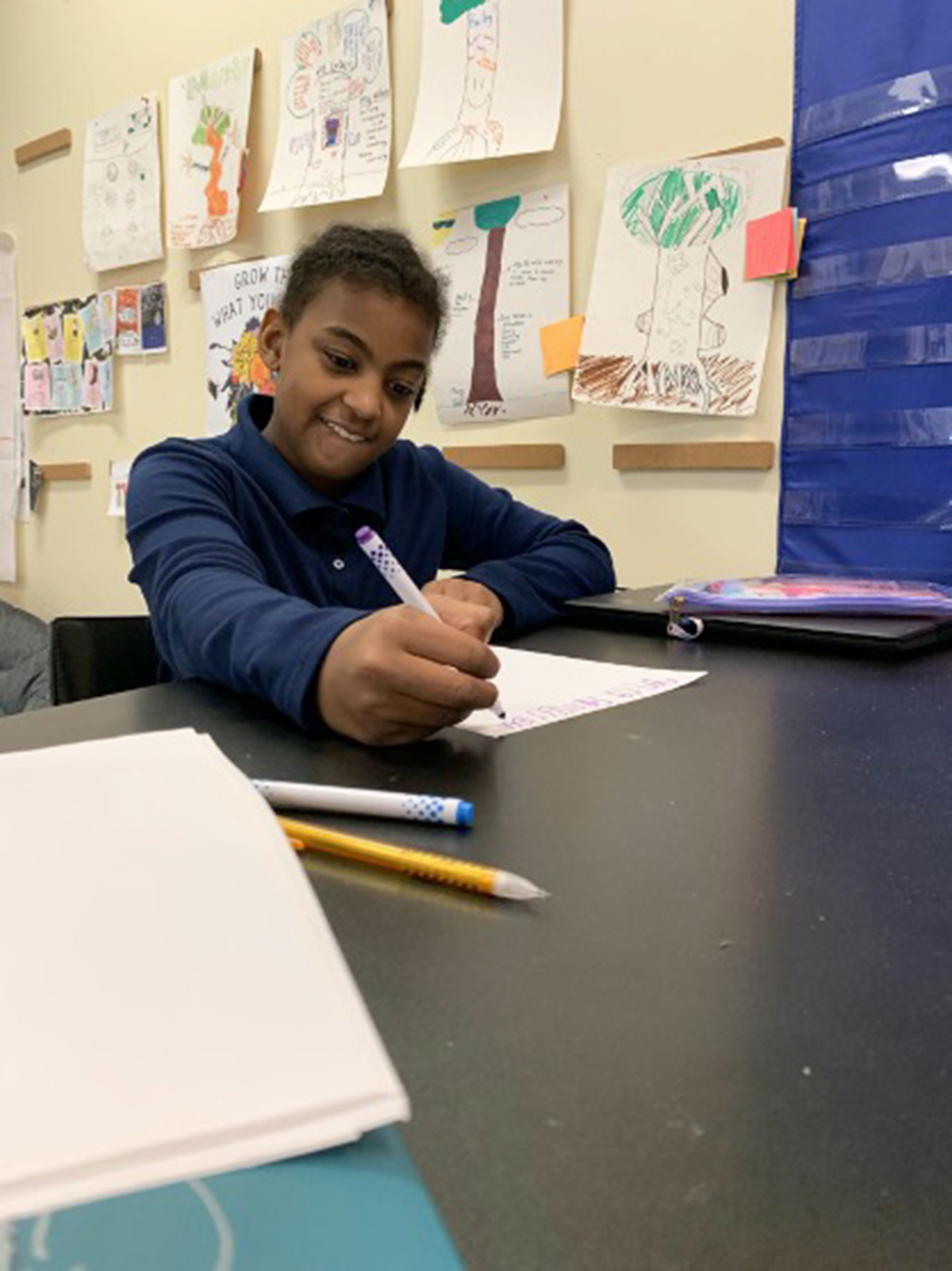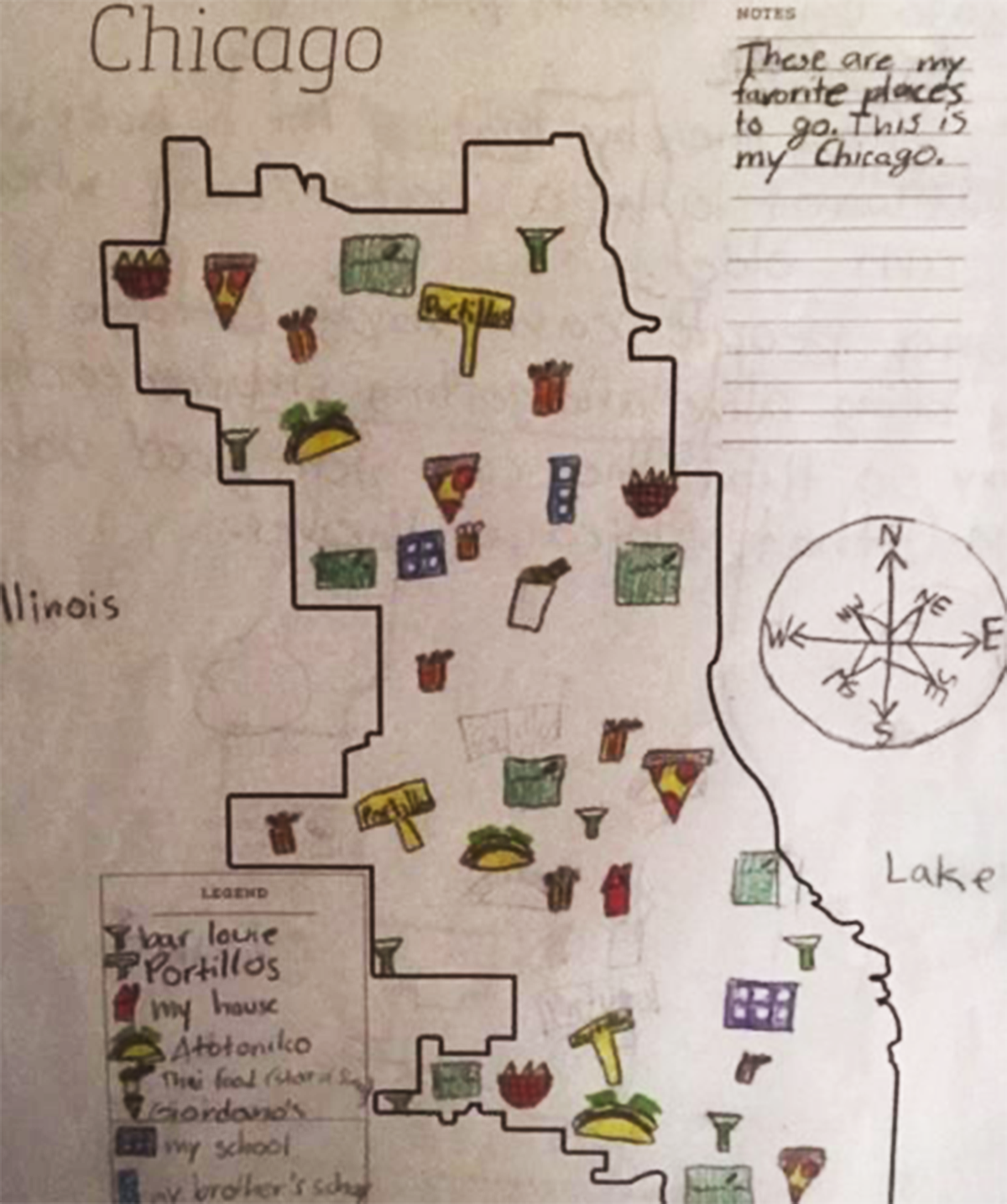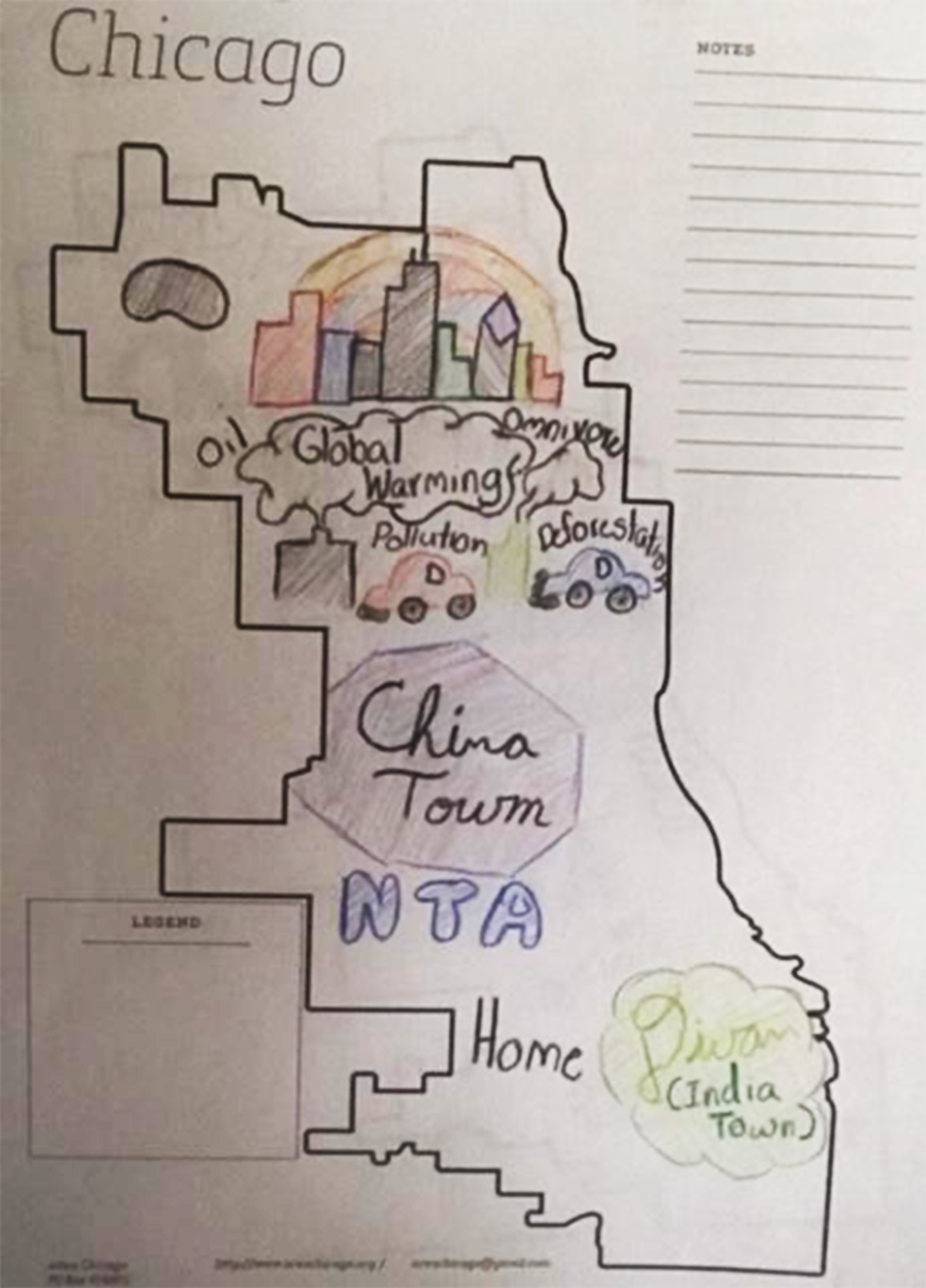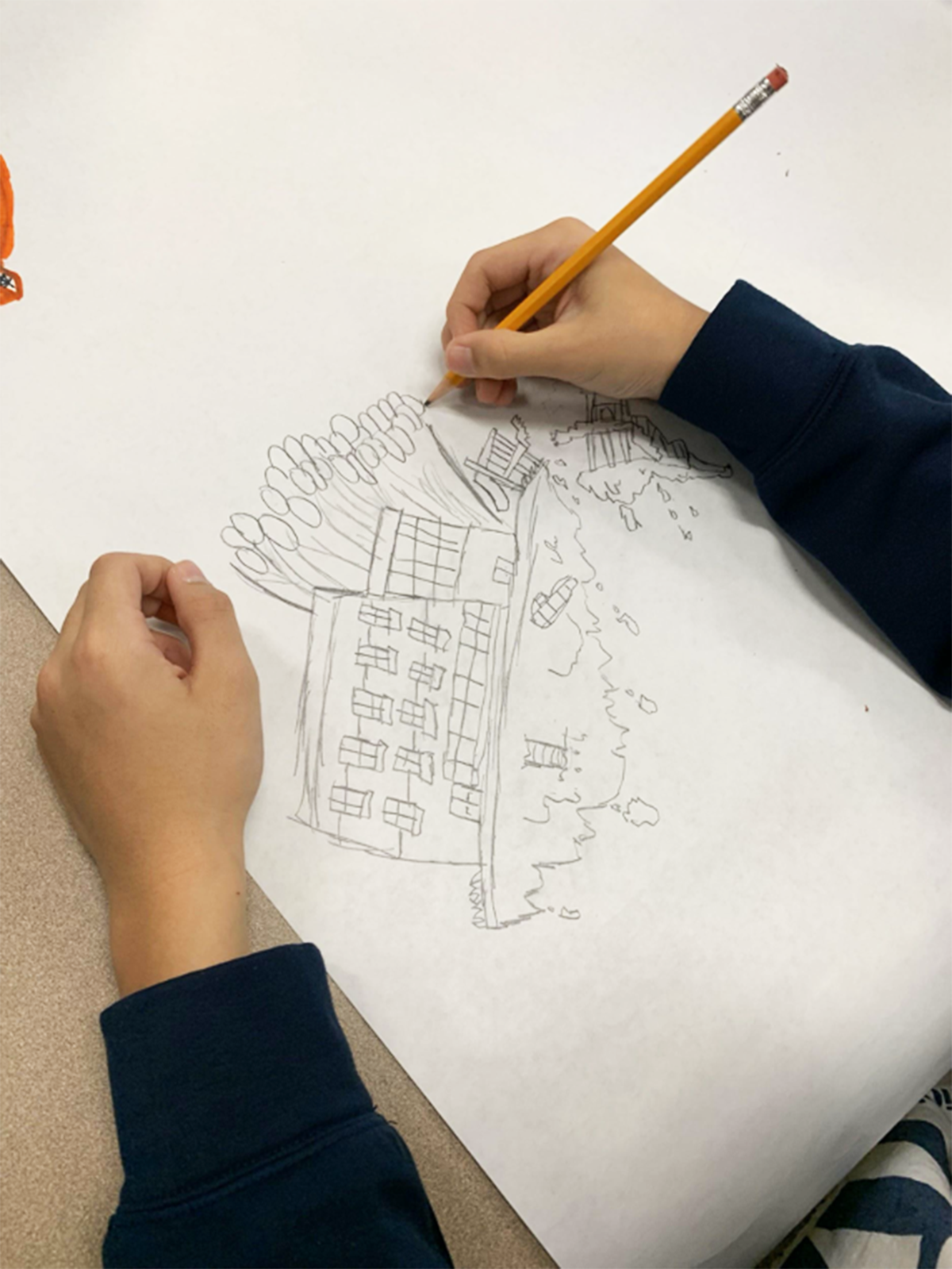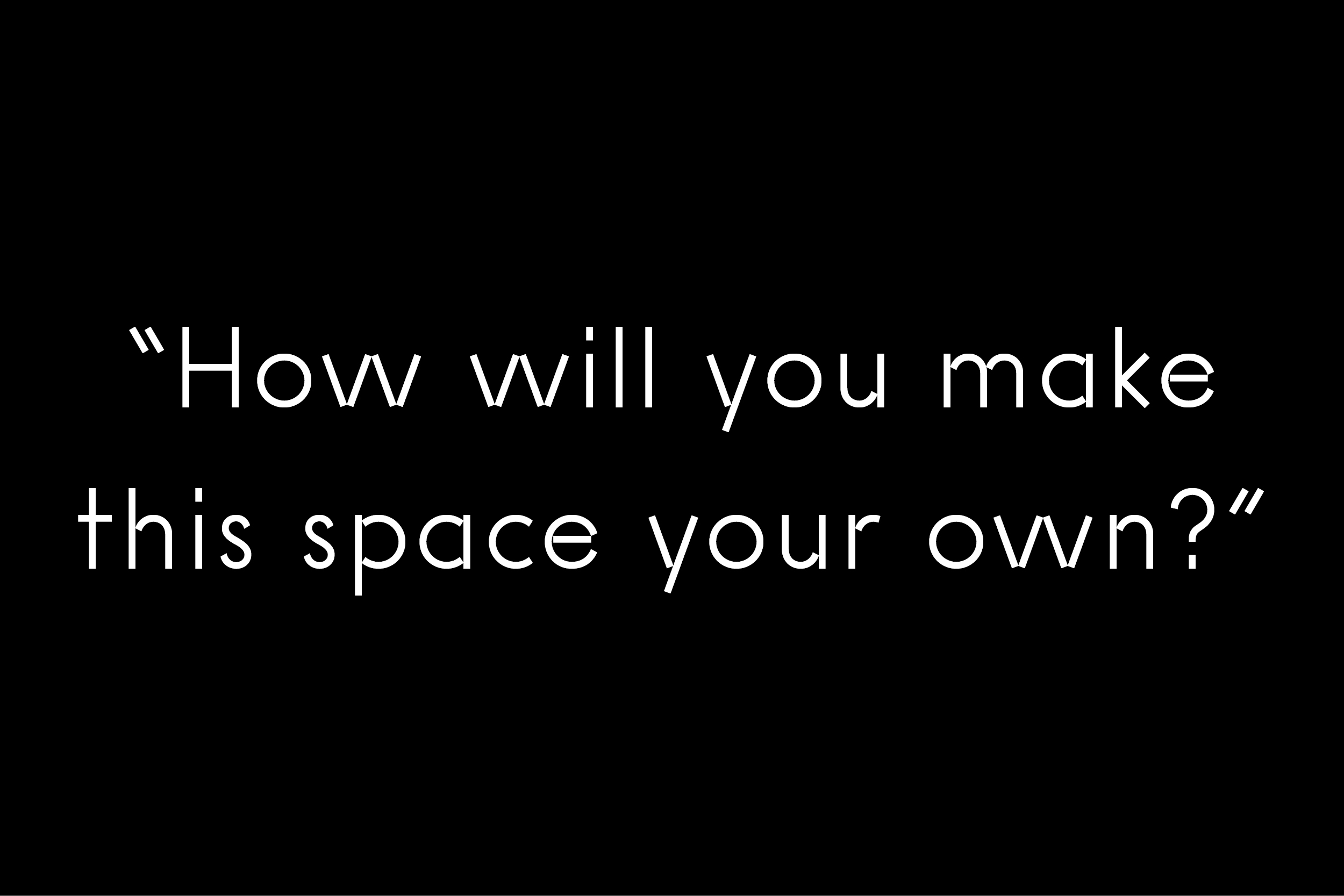
Dear Future Laura, aka Ms. G, aka Ms. Frizzle,
At this moment in time you are confused about the fabric of space and what time of day it is and who you are supposed to be within the walls of the 600 square feet of your apartment that you share with your partner and puppy. This year was an epically difficult year. You could make the sweeping generalization that change and transition is never easy for anyone, but this year felt like there was one event after another woven into a giant, weighted, suffocating blanket that spread over all you have ever been passionate about. You might call this depression. You might say that the shock of change gave way to numbness which gave way to frustration with yourself. This school year, it felt nearly impossible to access your own creativity, let alone help your students unleash their own. Where was the light breaking through? Upon taking the time to reflect, you are only now seeing that it was there, tiny moth-eaten holes in the blanket, or maybe moments when you did make connections with students that were strong enough for breakthroughs.
Your initial inquiry question was, “What is the relationship between space/place and identity?” With your students, you wanted to also explore further questions like, “How might the spaces we exist in shape us, and how might we have the agency to shape the spaces we are in?” and “What does this space (our school) mean to us?” You worked with your students to begin to interrogate how saving the space of the school against closure from CPS was just a first step in shaping the kind of school where we all wanted to be. You were an outsider to this community, having just come to National Teachers Academy after the fight, and only hearing narratives about the struggle from students, parents, and through media sources. Since the beginning of the year, you struggled to figure out how to “fit in” within this new space. And so you felt that the question, ‘Where do we go from here?’ might not initially include “you” in the “we.” And that revelation was part of the process of letting go, and actually seeing your students (something you pride yourself on).
At Sawyer, you built spaces with students that felt empowering. You built your identity as a teacher around the space you cultivated with your students, and your students shaped their multitudinous identities as they curated that space alongside each other. You all created a home that you were nostalgic for (and still are). This year had so many starts and stops, and an incredibly steep learning curve. Your classroom “management” style—built on relationships/rapport—was challenged by a new school culture dependent on what you deem an overabundance of punitive/extrinsic motivation factors. You have observed that this school culture has possibly diminished student curiosity and creativity. Here (there) the motivator for doing work is how many dojo points will I get and how will this affect my grade. This is a hurdle you have had to navigate. You have made some headway.
Process
Your original intent with this project was for students to interrogate the current way of doing school so we could work towards answering the question “How does/doesn't this space allow us to learn to build the world we want to live in?” You didn’t feel confident “going there” with students yet, but you’re getting there, especially when we are now reimagining school through the virtual world (mediated through a screen) and through concepts like mutual aid and being together but apart through this pandemic.
With your 6th grade students you explored the works of Amanda Williams, Jonathas de Andrade, and Assaf Evron, and you have all been unconsciously embracing “the meander” (a central theme in the MCA Assaf Evron exhibition) throughout these past few months. Your 6th grade students led the beginning of several projects to address the question of “where do we go from here?” They worked on planning a performance piece to do during our second quarter report card pickup (inspired by Jonathas de Andrade) where they asked people how they would impact other people and try to help others think about setting a “chain reaction” of doing good (originally the idea was to illuminate the permutations and effects of keeping our school open). This performance coincided with a fundraiser other students in the class organized to raise money for wildlife in Australia (a bake sale) and so the performance was somewhat overshadowed by a transactional event (somewhat philosophically fitting for what you find problematic about the school culture).
This process made you realize that you need to work on finding the nooks and crannies, (“teaching in the cracks”), in this new environment where many more things are prescribed and teachers are monitored on their pacing and standards alignment. You don’t have the infinite time that you used to for interdisciplinary and concept-based work with students. However, you are slowly gaining more faith that this type of teaching isn’t necessarily impossible in this new environment because . . .
The project took a different turn in February. Since the beginning of the year, your goal was to build relationships between students in your 5th grade homeroom. Your students in your homeroom are from different instructional classes (Tracking is terrible - We are tracked into Regional Gifted Center, “Achievers'' who are accelerated, kids who are “on grade level,” and children who are “diverse learners.”) However, one of the reasons you transferred to this school was because you saw posters about Black Lives Matter in Schools week as you walked around the school on your tour. And in your interview you heard that the principal was going to change the tracking model. And you heard and saw that teachers cared about social justice principles. And this year you learned that everyone definitely has their heart in doing “the work,” yet implementation is another thing.
And so this winter, as you worked to help students build relationships, you overheard a child say “Wow! She’s so good at drawing!” about another student’s doodle. The child who said that has been labeled a “diverse learner” and she made the remark about a student in the RGC. The student in the RGC then said the same about the drawings of another student who is labeled a “diverse learner.” Lightbulb moment! Could we use art to “shape” our homeroom and to make this space we are in together for at least an hour a day our “home”? We began in early February, coloring in sheets from a Black Lives Matter in Schools resource together each morning, singing songs together. We moved on to painting on canvases to make a collective mural. This is something we will work on again when we come back to school (home), but you realized that this work aligns so well with the initial question that you posed to your 6th graders “How do we shape the spaces we are in, and how do the spaces we are in shape us?” because we were redefining the relationships we had with one another (often relationships that held conflict and tension, a product of the systemic divides of tracking).
Conclusion
As you still feel new to this space you, this question of how we shape space will take on the form of the more personal “who are you going to continue to be as a teacher in this space?” and “how will you make this space your own?” and “how will you welcome students to continue to be a part of that process?” And right now, you are very much missing the space you held with your students, and you are missing their art on the walls, and their voices, and perspectives. Mostly you really want to continue this process of learning what it means to shape the world. You will try to do this (in community) through a screen for now.
All my best and stay safe (the way you’ve been ending all emails and electronic notes these days),
— Laura
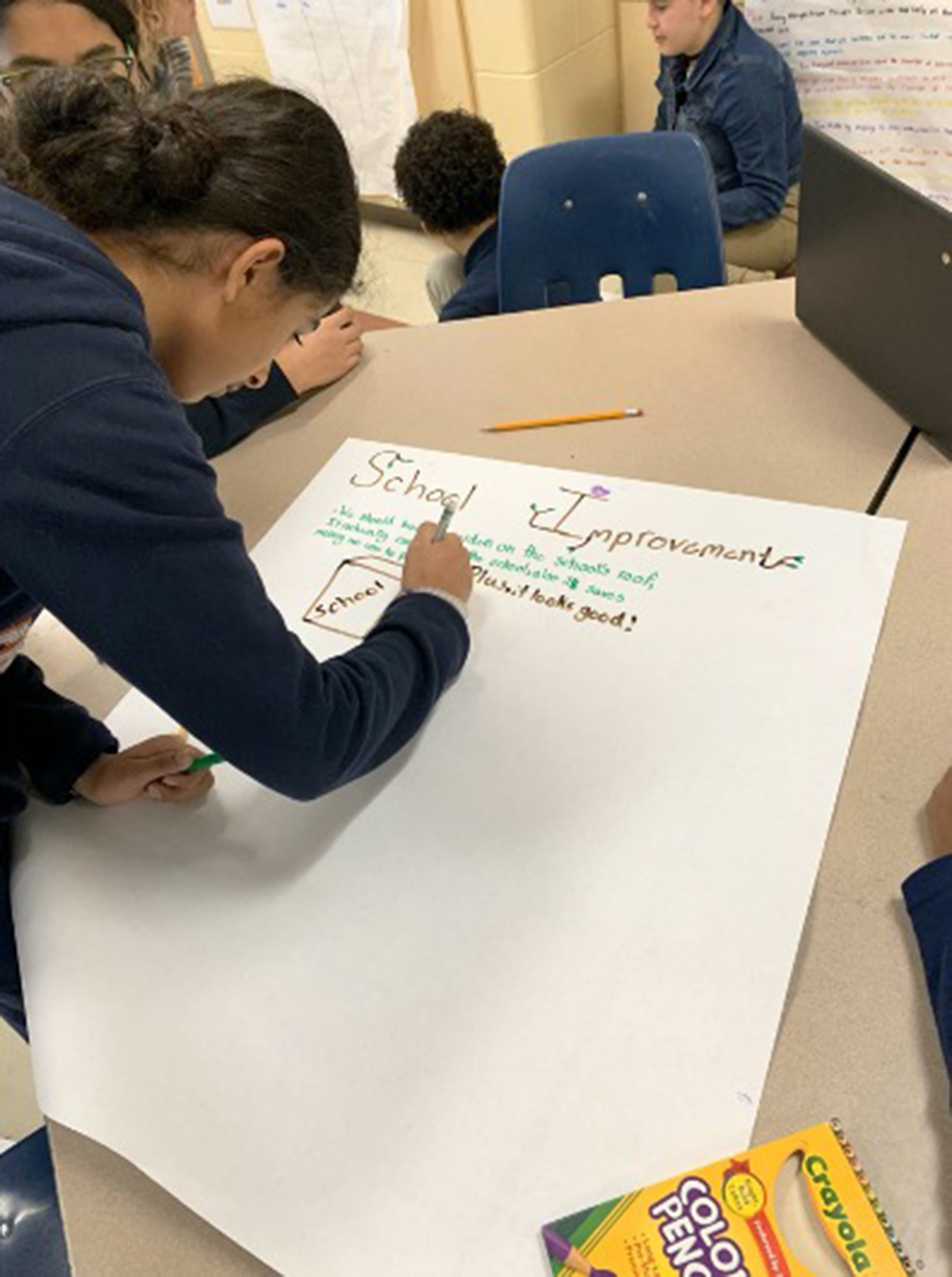
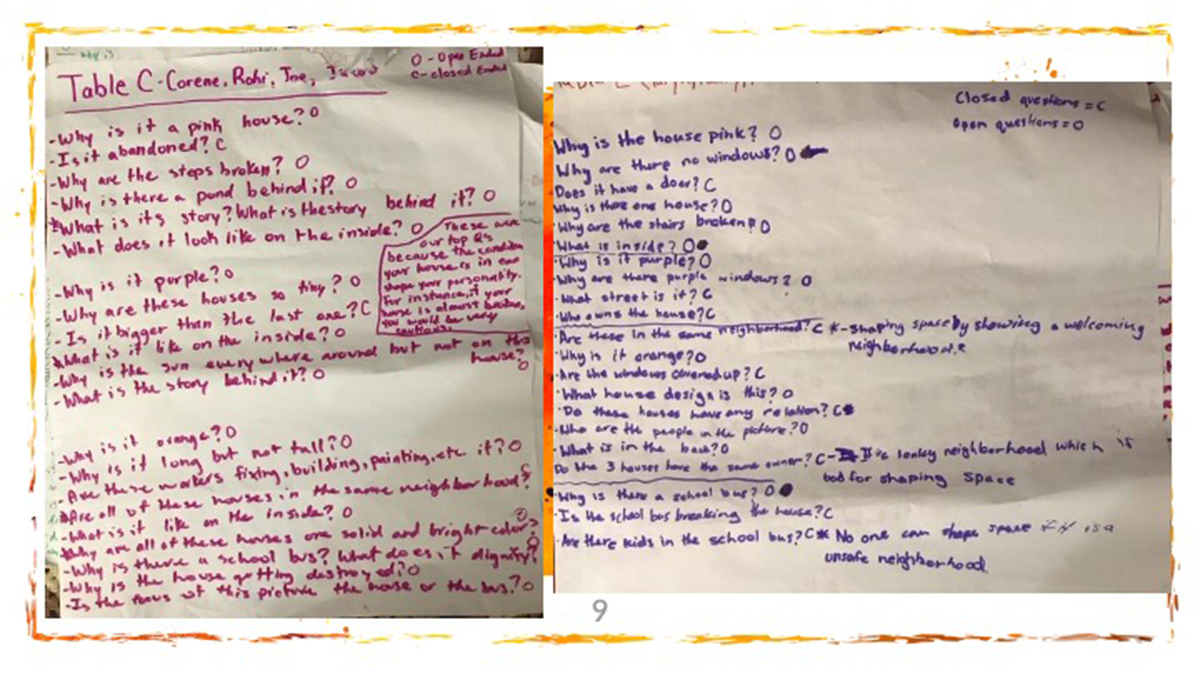
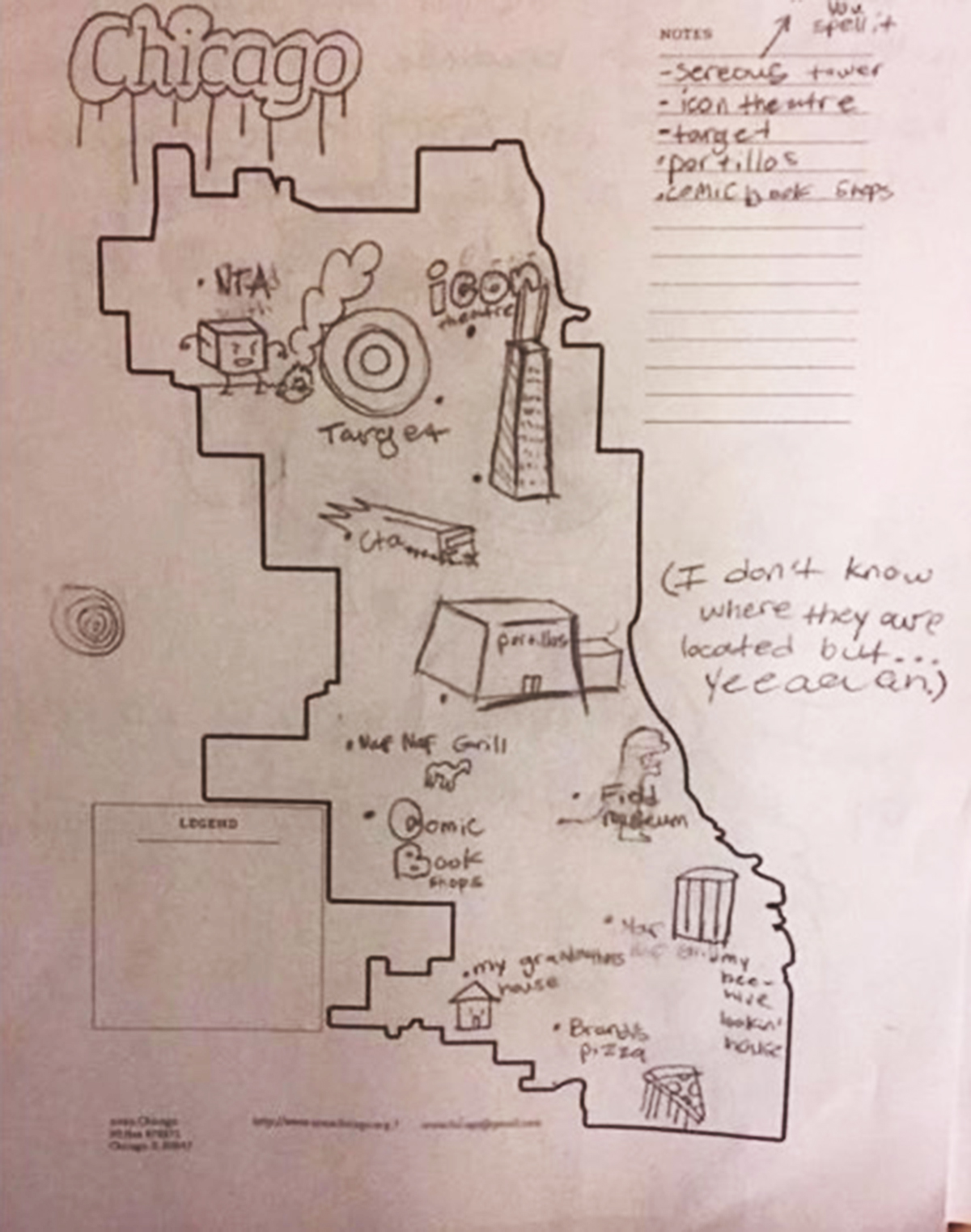


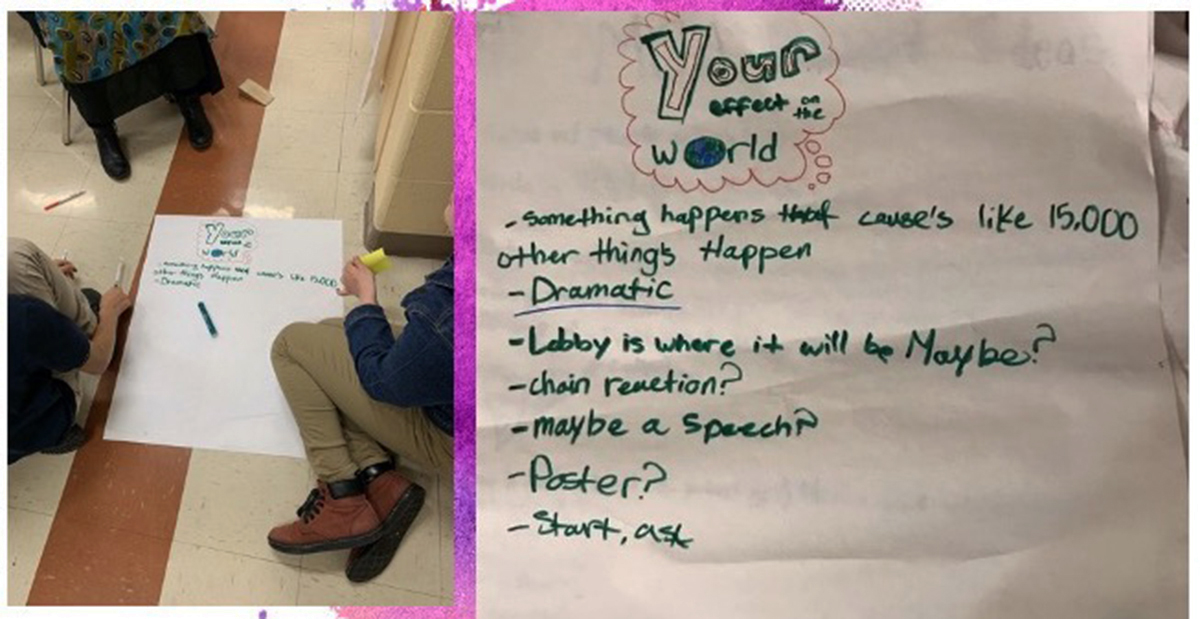
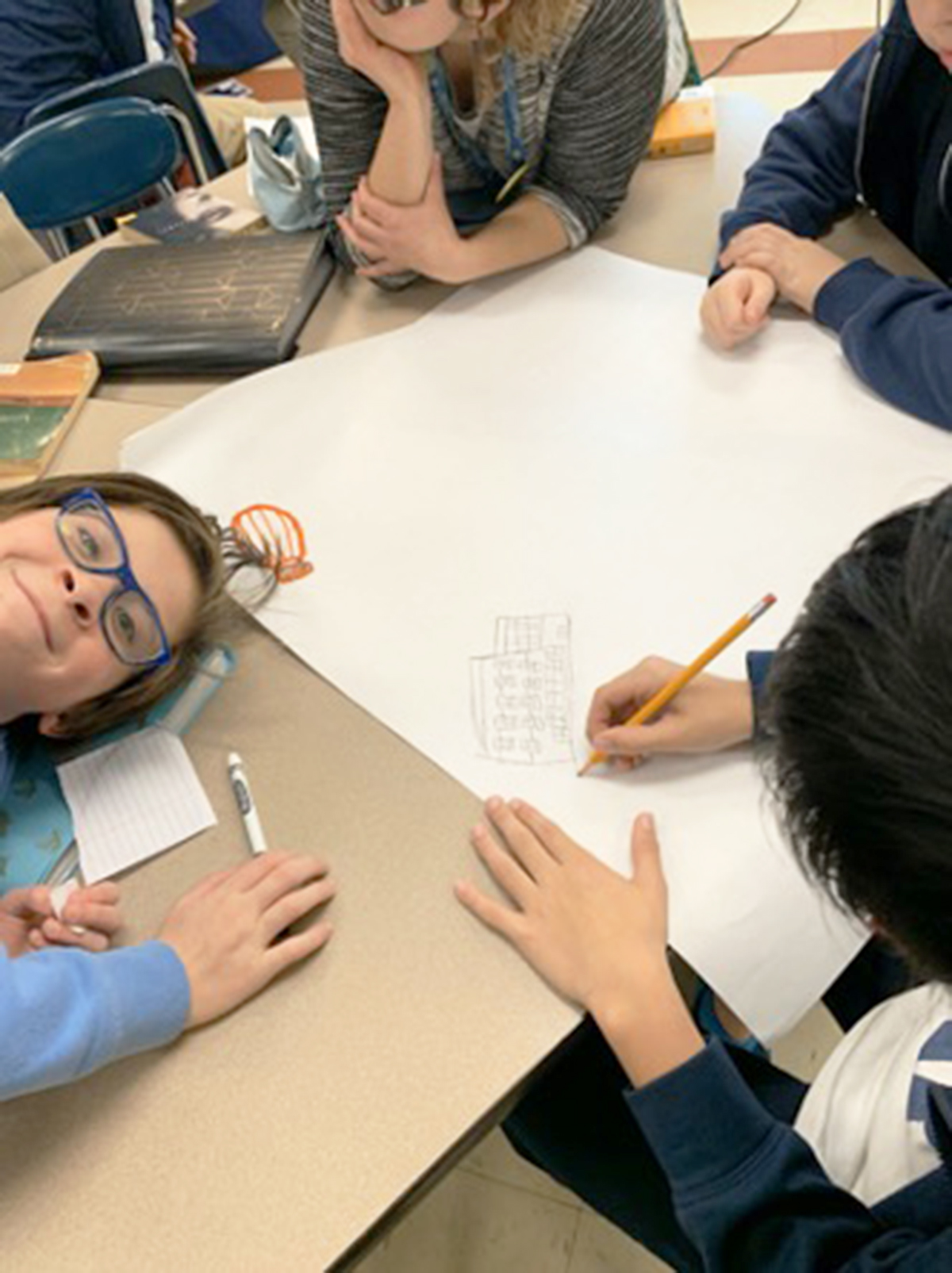
SHAPE YOUR SPACE TOGETHER
Build in a generous amount of time for you and your students to come together as a community and fill your shared space with art, music, and energy. Start with something simple, like coloring sheets from a Black Lives Matter Schools Resource. Sing songs together. Move on to painting original and collective works to decorate your walls.
Laura Gluckman
National Teachers Academy
Laura Gluckman became a teacher in Chicago Public Schools in 2010 after graduating from the University of Chicago’s Urban Teacher Education Program. She taught 5th, 6th, and 7th grade ELA, Science, and Social Studies at Sawyer Elementary School on Chicago’s Southwest side for 9 years, and is now teaching 5th/6th ELA and Social Studies at National Teachers Academy.
Laura has been involved in several teacher-leader opportunities, including being a member of the Museum of Science and Industry’s Teacher Leader Advisory Council, a study group coach through Working in the Schools, and by participating in the Facing History and Ourselves Teacher Leader Team. In the 2016-2017 school year, Laura was a Chicago Foundation for Education Action Research Leadership Institute fellow, and wrote a paper about the effects of school gardening titled, “We’ll Have Infinite Garlic: The Effects of School Gardening on a 6th Grade Classroom.” She was a Senior Fellow through CFE in the 2017-2018 school year, researching student activism and writing a paper titled, “Power to the Youth: Fostering Student Activism Through Participatory Action Research.” Laura enjoys reading and writing, cooking with her partner, gardening, collecting fossils at the lake, and being a mom to her dog Patchy.

